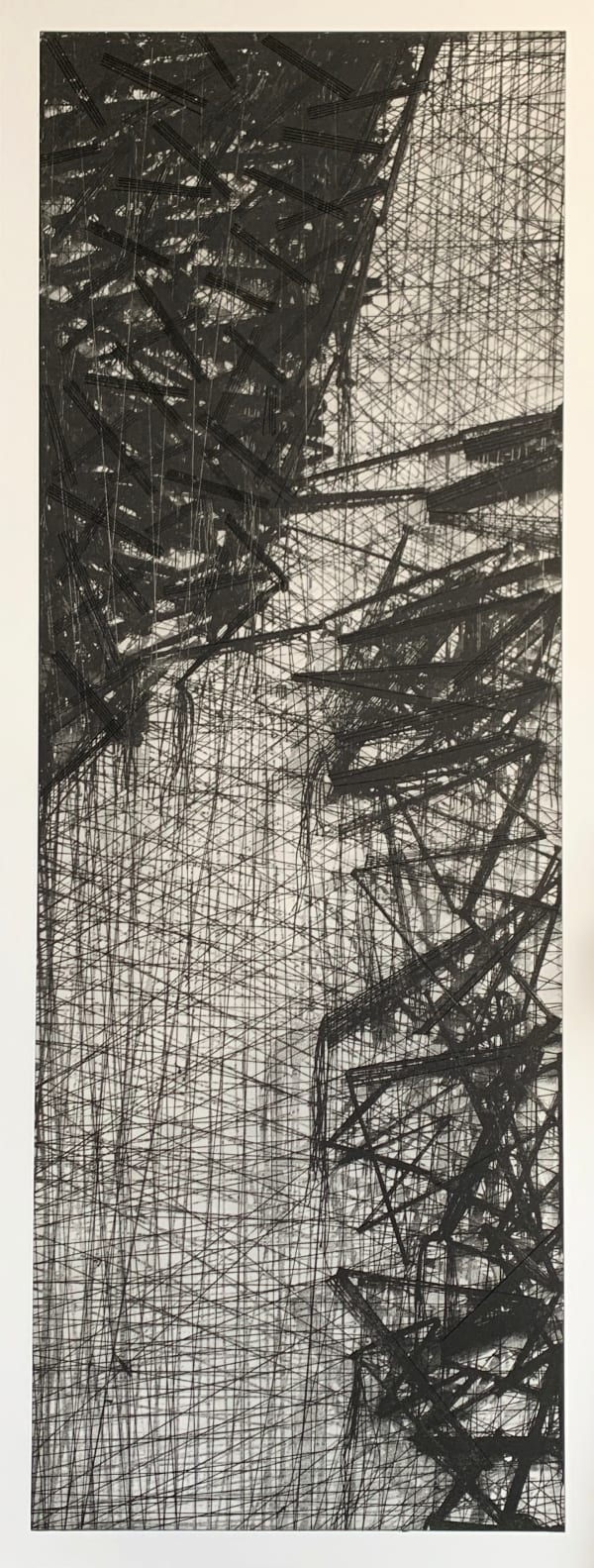Shi Hui: White Meditation
It is with great honor that BANK presents its first solo show of the contemporary living legend, Shi Hui. Running concurrent with Shi's presentation at the 2024 Venice Biennale, BANK celebrates Shi's longstanding contributions to the arts of China and the world with a cross-section of her creative output that spans over twenty years. This exhibition of Shi Hui also helps tie together the narrative of fiber arts in China, starting with BANK's past presentations of Maryn Varbanov, Madame Song and others.
Coming from a long lineage of artists, Shi Hui positioned herself as an essential proponent of the fiber arts movement in China early on, and her dedication to this genre continues today. In 1986, she began her studies with Maryn Varbanov and assisted this Bulgarian master on many of his personal projects. In 1987, before completing her master's degree, she participated in the prestigious Lausanne Biennial, the first of many international exhibitions for Shi. Picking up where Varbanov left off in 1989, Shi established a vital place for fiber arts in the canon of Chinese art at the China Academy of Art (CAA). She directed the Department of Fiber Arts for nearly three decades, helping to usher in generations of artists working in the experimental realm of fiber and installation. She also founded the Hangzhou Fiber Arts Triennial in honor of Varbanov's legacy, providing a comprehensive platform for quickly developing trends worldwide. The Triennial, leading up to its 5th incarnation, has provided some of the world's most respected artists with opportunities to exhibit ambitious projects in China. Past participants include: Grayson Perry, Kim Sooja, Urs Fischer, Magdalena Abakanowicz, Sheila Hicks, Joseph Beuys, Ann Hamilton, etc.
While Shi Hui's endeavors as an educator and facilitator are unparalleled, her artistic creations are her most vital contribution to art and culture. Shi Hui has introduced a unique visual language to the fiber arts tradition that is distinctly Chinese and her own. Employing the traditional materials, techniques, and philosophical concepts of her motherland, Shi has created a space that is reflective of the shanshui and ink painting conventions and, at the same time, challenges them. Working and weaving with xuan paper, hemp, ink, organic matter, threads, and various structures, her work rigorously defies categorization. In his essay, Xu Jiang defines Shi Hui's idiosyncratic practice as White Meditation, a holistic conception of heaven and earth that might've been induced by grieving the sudden death of Varbanov. With White Meditation she has taken to observing and reflecting on the phenomena of nature, stripped of all color and superficiality, to access its healing essence. In this exhibition, we introduce two major early installation works in concert with her current works to demonstrate Shi's expansive yet consistent oeuvre.
The show opens with her monumental Compendium of Materia Medica, a 2009 work that remakes the Chinese classical encyclopedia of medicinal cures into a series of mummified open books displayed on industrial metal iron shelves. Instead of texts, the medicinal materials themselves - herbs and leaves - compose the scriptures. In this work, "the artist creates an archaeological exercise of the spirit", she inspects the relationship between man and nature, observer and observed, library and reader, to draw forth spiritual resonance in these alliances. Xu Jiang writes, "The dried herbs embedded in paper do not bloom like spring; instead, they resonate with the atmospheric poetry of autumn." Elsewhere in the show, the pretense of writing and reading are echoed. Each artwork plays with text as form and metaphor. In Writing/Nonwriting black wooden cubes are penetrated with braided white rope to create entangled characters. The confluence of forms and materials here shows Shi Hui's mastery; the straight edge of the hard blocks against the sinewy snake of the rope expresses a contradiction that the content of the work itself echoes. In her latest creation, pieces of calligraphy are folded and sewn directly into A4-sized handmade pieces of paper as a maximalist take on language and writing.
Shi often employs space as a medium to create otherworldly, fantastical, and haunting environments. Shi's 2004 work Frozen Wind, a forest of illuminated thick vines with bulbous appendages and veins running over them, evokes a sci-fi landscape. This work mimics both the external world of subtropical fauna and the microscopic conduits of living organisms. Its internal biological celluloid structures are not only visible in the larger view of the but in the details of each piece. Planted in a dedicated dark space, the viewer is invited to lose oneself in the weave of work.
This mini-retrospective exhibition of Shi Hui's work at BANK stands as a testament to her enduring influence and significance in the realm of contemporary art, both in China and on the global stage. Through her pioneering efforts in fiber arts and her role as an educator, Shi has not only shaped the trajectory of this artistic discipline but has also contributed to a broader understanding of Chinese visual culture. Her artistic creations, characterized by a unique blend of traditional techniques and philosophical concepts, offer viewers a profound exploration of nature, spirituality, and the human condition. From her early installations like "Compendium of Materia Medica" to her latest maximalist explorations of language and writing, Shi's oeuvre is marked by innovation, depth, and a relentless pursuit of meaning. As she debuts in a commercial gallery alongside her representation at the prestigious Venice Biennale, Shi Hui continues to bridge cultural boundaries, bringing her "White Meditations" to audiences worldwide and reaffirming the enduring power of art to transcend borders and connect humanity.
Text/Mathieu Borysevicz








